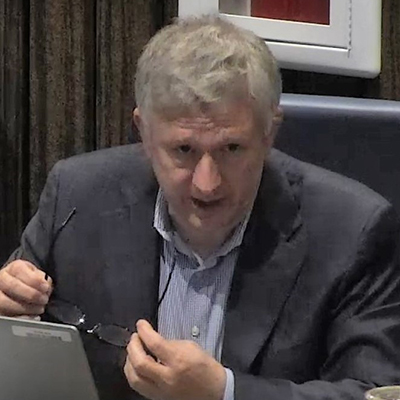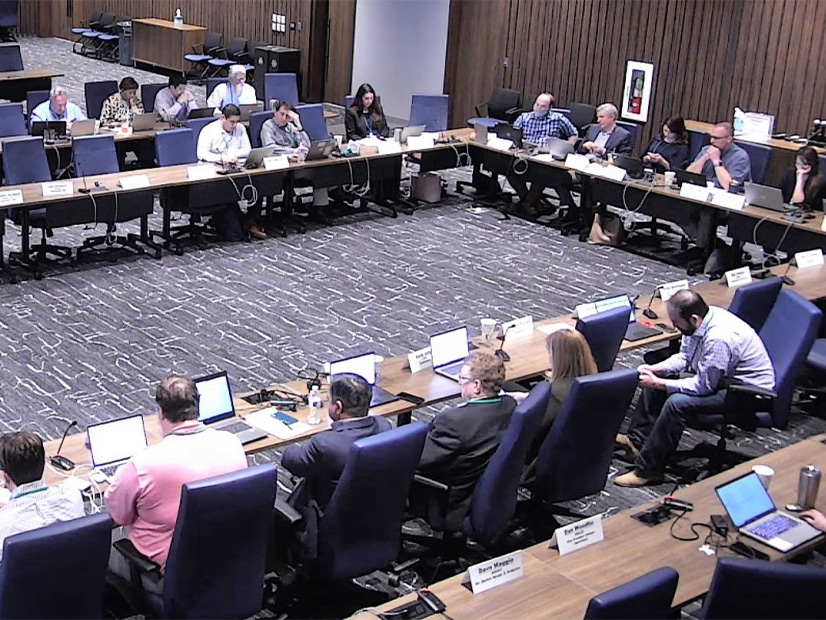Staff Proposing Bridging Solutions to ERCOT’s Long-term Market Redesign
ERCOT staff have prepared a draft of its early thoughts on a bridge solution to Texas regulators’ preferred market design, which is not expected to be implemented for at least three years.
Kenan Ögelman, ERCOT vice president of commercial operations, told the Technical Advisory Committee during its Monday meeting that staff will bring some proposed recommendations to the Board of Directors’ Reliability and Markets Committee meeting Feb. 27.
ERCOT plans to hold at least two workshops with stakeholders in March to solicit feedback and other alternatives. The board, responding to a directive from the Public Utility Commission, is expected to approve a final bridge recommendation during its April meeting.
 Kenan Ögelman, ERCOT |
Kenan Ögelman, ERCOT |
“We would very much like to hear from interested stakeholders on what we have,” Ögelman said. “I might have to pivot on what I just said, depending on the feedback that I get, so I just want to put that caveat out there.”
ERCOT on Wednesday filed several bridging solutions in the R&M’s background materials. They include a manually settled performance credit mechanism (PCM), mirroring the market mechanism the PUC has recommended to state lawmakers for their consideration. (See Texas PUC Submits Reliability Plan to Legislature.)
The PCM rewards generators in ERCOT’s energy-only market with credits based on their performance during a determined number of scarcity hours. Those credits must either be bought by load-serving entities or exchanged between them and generators in a voluntary forward market.
Staff say the manual PCM could be brought online late this year or early next year and that it has mechanisms that preserve both existing generation and new resources. They suggest the markets would gain experience with the “proposed future state.” However, the solution doesn’t create an obligation for LSEs to contract, and there would be no forward market; the performance credits’ value would be determined by ERCOT.
ERCOT is also proposing procuring more ancillary services and making payments to more market resources; modifying the operating reserve demand curve to achieve a one-in-10 loss-of-load expectation in 2026; deploy a backstop reserve service that secures a preset capacity amount based on bids; and capacity contracts to bring retired generators back to life.
The various options fall within three categories: solutions that address new investment and maintaining existing resources; those that address existing resources; and those that address new investment.
System Admin Fee up for Increase
Staff told stakeholders to expect an increase in the system administration fee next year, a message that was first relayed during last August’s board meeting. However, Controller Richard Scheel declined to provide an idea of how large the increase will be from the current 55.5 cents/MWh rate that has been in place since 2016.
“I hesitate to comment on the magnitude publicly before I discuss it with the board,” he said.
Scheel plans to take the same message to the Finance and Audit Committee’s Feb. 27 meeting. He’ll return to the committee and the board in April with proposed numbers.
Stakeholders had asked staff to provide them with more advance notice of admin fee increases during the 2016-2017 budget cycle. Lower Colorado River Authority’s Emily Jolly reminded Scheel that TAC’s ask included an idea of the magnitude of any increase.
“Telling our folks back at our shops that there’s going to be an increase and not being able to give them more detail is a little bit challenging,” she said.
Scheel said the final number is still under development. “We’re happy to talk about that more at the April meeting.”
Staff also said they have a path to restart the real-time co-optimization project, which has been on hold since mid-2021. They are evaluating the program’s scope and any gaps and overlaps in RTC-related protocols during the past two years.
Staff plan to complete a prospective budget and schedule for consideration by the June board meeting. The project still has a $51.6 million budget line item and a three-and-a-half-year timeline, but a new impact analysis will be conducted.
Members Approve 2023 Goals
The committee approved its goals for 2023 and those of the Retail Market Subcommittee as part of the combination ballot. TAC’s 19 goals include two late additions to review market design changes and improvements made since the February 2021 winter storm, and to support ERCOT staff in identifying, developing and implementing bridging solutions.
Members approved the ballot 28-0. It included two nodal protocol revision requests (NPRRs) and a single change to the Retail Market Guide that, if approved by the board, would:
- NPRR1158: eliminate the weatherization-inspection fee’s sunset date and changes its invoicing period from a quarterly to a semiannual basis.
- NPRR1159: provide needed references to the Retail Market Guide accounting for Texas standard electronic transaction processing options for municipally owned utility or electric cooperative service areas. The change is aligned with RMGRR171, which would add language establishing the mechanism that opt-in MOUs or cooperatives without an affiliated provider of last resort (POLR) that have not delegated authority to designate POLRs to the PUC would follow to provide their initial POLR allocation methodology; and updates and confirms such allocation methodology.



